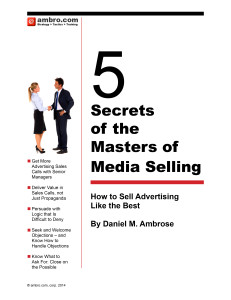Procter & Gamble, the world’s biggest advertiser, announced its earnings last week, surprising some with growing sales and profits by cutting $140,000,000 in the most recent quarter in digital ad spending. Advertising Age reported that Chief Financial Officer Jon Moeller noted Chief Brand Officer Marc Pritchard’s broader efforts to eliminate “a significant amount of waste” in the digital media supply chain. Bottom line: Sales were up, while digital ad-spend was down.
 Some have concluded that the cutbacks started when P&G pulled ads from YouTube, because they were appearing on content P&G found objectionable. But when spending is cut at a $560,000,000 annual spend-rate, it’s coming from more than one place. With sales growing 1% or greater, and spending down so much, I suspect that cuts came from spending that could not be properly verified…ads that were paid for in the past but never delivered or never seen.
Some have concluded that the cutbacks started when P&G pulled ads from YouTube, because they were appearing on content P&G found objectionable. But when spending is cut at a $560,000,000 annual spend-rate, it’s coming from more than one place. With sales growing 1% or greater, and spending down so much, I suspect that cuts came from spending that could not be properly verified…ads that were paid for in the past but never delivered or never seen.
Fraud is a rampant part of digital advertising today. Why? Like Jesse James said when asked why he robbed banks, “That’s where the money is.” Many fraudsters, mobsters, and political hacksters have figured out they can stay one-step ahead of the honest digital verification processes. They can deliver fake news that attracts real dollars, or simply fake ad impressions that earn real money.
Can digital verification processes catch up? I doubt it. The incentive to cheat is great. Finding a way to capture just a small portion of the hundreds of billions spent on online advertising makes for handsome illicit profits. Mayhem artists will work hard to invent work-arounds for every new digital verification process.
For a politically motivated cheater, or a geopolitically motivated foreign government disrupter, it’s a win-win situation to create fraudulent-scare-content and earn money delivering it. Will they stop if the industry makes it harder? Not likely. For a simply money-oriented fraudster, well it’s a big tent, room for them, too.
In today’s world, advertising rates available to be earned by legitimate publishers are depressed by the volume of low-rent or outright fraudulent content that attracts advertising, too.
The time has come for the legitimate digital press and advertisers who want to maximize their ROI on advertising to organize the 21st century’s digital version of the Alliance for Audited Media. In 1914, AAM predecessor, the Audit Bureau of Circulations, was formed to fight the rampant cheating in circulation claims among newspapers and magazines. Many cities had 3, 4 or 5 and more newspapers competing for circulation and advertising with widely varying degrees honesty. The ABC helped advertisers know where they could spend their money well. Some media properties prospered, others went by the wayside.
You may be thinking the industry has already addressed this problem. Au contraire. The Internet Advertising Bureau is not run for the benefit of legitimate publishers, nor for the benefit of advertisers. The IAB is controlled by the companies who pay the most dues, not the companies that invest in content, nor the advertisers, the tech companies who, like Google and Facebook ride on the backs of content. I’ll address this in more detail in a coming post.

